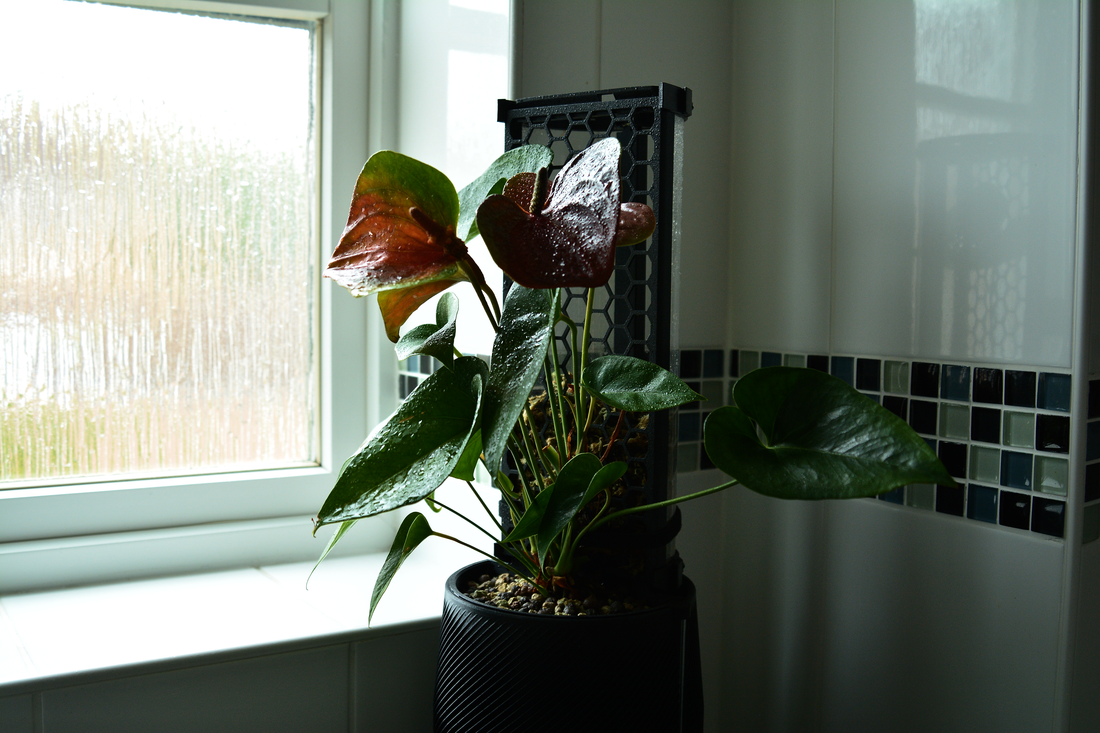
Troubleshooting moss pole & houseplant issues
Share
Even with the best setup, moss poles and houseplants can present some pesky challenges.
Luckily, most issues are simple to fix once you know what to look for. In no way is this a wholly comprehensive list, but here are some of the issues and challenges you might face on your moss pole journey..... and how to fix them!

Common issues with moss
Moss storage and moisture, gnats, smell.... here are some moss tips to help you ace your moss journey!
- Moss types: Spaghnum moss is the best type to use for moss poles, and the ideal is live moss (not dried), however you can get pretty good moss bricks that are easy to re-hydrate if you want a bit more of a budget and storage-friendly option. Always shop from ethical suppliers.
- Storage concerns: Moss can last for months if kept in a cool, dark place. Only water the moss once you’ve potted up. Keeping it in an airtight container will help lock in some moisture when it's not being used in moss poles.
- Fungus gnats: Let moss dry out occasionally to kill eggs. Neem oil is also effective as a gnats-repellent.
- Smelly moss: Cheap moss may carry odours: invest in quality sphagnum for the best experience. Moss that you have to rehydrate can come with some smell issues, though they are often not permanent, so perhaps a good airing will do the trick!
Moss pole moss hacks
Got your moss ready to go? Getting the moss onto your moss pole is the next stage....
- Moss volume: The rule of thumb is that you need a little over a litre of moss per moss pole section.
- Moss packing: We tell people not to "overpack" the moss inside moss poles as there can be a temptation to overcompact the moss, however you also don't want to leave it too loose! A happy medium is a compact moss pole that still has some "air" in it that allows for healthy aerial circulation (and roots!).

- Moss moisture: If you are using live moss it does not need to be soaked upon assembly. You should be able to pour some water into the dripcap at the top and let it filter down the pole. I usually try to give the moss a little water every other day, as once the moss dries out it becomes somewhat hydrophobic until it soaks up some water again, so a little and often is best. (Drip caps help with this).

Common plant health issues
Trying to diagnose an unhappy houseplant can be a neverending story... Sometimes there is no easy "one size fits all solution" to help your plant, but here are some issues that may arise!
- Got an unhappy looking plant? It's possible you have the number 1 houseplant killer: root rot. Combat it by removing damaged roots, rinsing in clean water, and repotting into fresh mix. Adjust your watering routine to avoid repeat issues. Our planters range are designed with built-in drainage and cache plates to help combat this issue.

- Sad leaves: Often a sign of overwatering or poor light. Adjust care gradually; plants are surprisingly resilient and can often recover and put out better leaves.

- Burnt or crispy leaves: Leaves can also "burn" in the sun, or brown bits could also be a sign of not getting enough water or nutrients.
- Plant "shock": Repotting, bringing them home, changes to the environment: all these can shock plants and make them regress, put out smaller and less variegated leaves etc. Sometimes time is the only healer, but you can give your plant some extra TLC and nutrients to help aid recovery.
Getting your plants used to using moss poles
We have detailed instructions for moss pole assembly that include some handy tips (here and here), but there are also some general tips to keep in mind that work across the board.
- Moss pole potting up: We recommend attaching the pole to the pot with zip ties as it provides maximum stability for the plant and the moss pole.

- Moss pole securing: Don't be sparing with the twine! You can pull the stem straight against the pole and strap it tight, and then use positioning and light to get the leaves to face the way you want.
- Fixing materials: Normal twine is fine, you just want to avoid anything too thin and sharp that may cut into the stem. I use green plant tape, like that I can move it up and down and reuse it as the plant latches on.
- Plants reacting badly: Don’t panic if your plant looks unhappy after adjustments. Most plants bounce back quickly with proper support and care.
Moss pole stability troubleshooting

- Tall, heavy poles that are leaning: Use a bracket or bamboo reinforcement stake. Wet moss adds significant weight, so what feels stable at first may lean over time.
- Plant weight: If your plant is especially heavy, consider upgrading to XXL poles for more rigidity and root volume.
- Outdoor use: Most moss poles are designed for indoor conditions. Sun and rain can fade colors or warp materials.
Our guide to spaghnum moss poles and how to use them also has some helpful advice if you're looking to succeed with moss poles.



